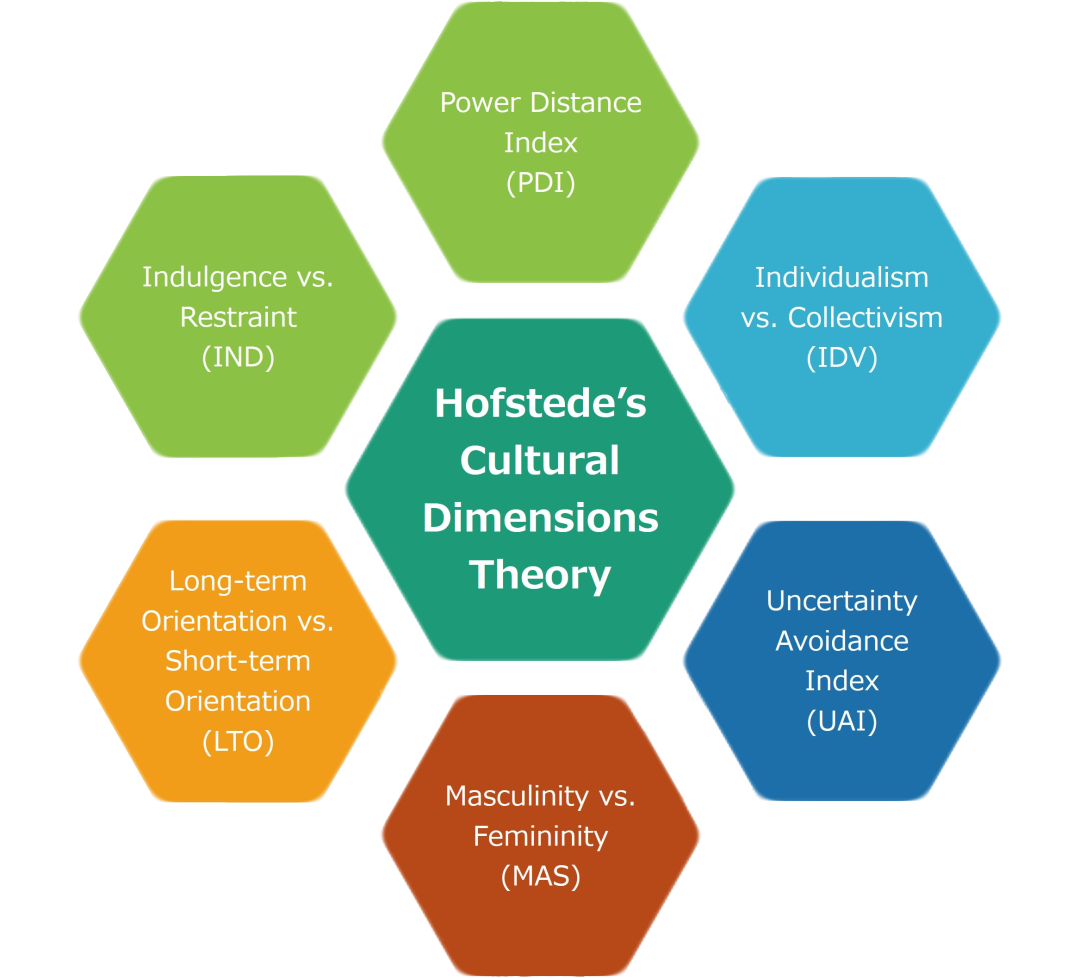Insights from Hofstede’s Cultural Dimensions
In today’s globalized world, international business transcends borders, cultures, and languages. Consequently, the most critical aspect of successful international business is understanding the diverse cultural differences when working across borders. Therefore, Geert Hofstede’s Cultural Dimensions Theory provides invaluable insights into the cultural differences that impact international business interactions. In this article, we’ll delve into each of Hofstede’s 6 Dimensions of Culture and explore how they play a pivotal role in shaping international business practices.
Power Distance (PDI): Understanding Hierarchy and Authority in Global Business
Power Distance (PDI) is the first dimension in Hofstede’s framework, which assesses how a society deals with hierarchical structures and unequal distribution of power. Moreover, in the realm of international business, comprehending the nuances of power distance is paramount. Therefore, we’ll explore how this dimension influences leadership styles, decision-making processes, and organizational structures in diverse cultural contexts. From high power distance cultures to low power distance ones, we’ll uncover the implications for effective leadership in international business.
Individualism vs. Collectivism (IDV): Building Effective Teams and Relationships Across Cultures
The second dimension, Individualism vs. Collectivism (IDV), probes how cultures prioritize individual interests versus group harmony. Consequently, in the world of international business, teamwork and relationship-building are critical. Therefore, we’ll examine how this dimension influences employee expectations, collaboration dynamics, and the negotiation of partnerships. Whether navigating individualistic Western cultures or collectivist Asian societies, understanding IDV aids in forging successful business relationships.
Masculinity vs. Femininity (MAS): Balancing Competition and Collaboration in Global Markets
Masculinity vs. Femininity (MAS) is Hofstede’s third dimension, evaluating the extent to which cultures emphasize traditionally ‘masculine’ qualities like competitiveness versus ‘feminine’ qualities such as cooperation. Consequently, in international business, striking the right balance between competition and collaboration is essential. Therefore, we’ll delve into how this dimension influences corporate cultures, management approaches, and negotiation strategies across diverse cultural landscapes.
Uncertainty Avoidance (UAI): Managing Risk and Decision-Making in International Markets
Uncertainty Avoidance (UAI) is the fourth dimension that gauges a society’s tolerance for ambiguity and risk. Given that international business is rife with uncertainties, making UAI a critical consideration, we’ll explore how cultures with high uncertainty avoidance seek structure and predictability. In contrast, those with low uncertainty avoidance value innovation and adaptability. Consequently, this dimension shapes risk management strategies, negotiation styles, and business decision-making processes.
Long-Term Orientation vs. Short-Term Orientation (LTO): Crafting Sustainable Strategies for Global Success
Hofstede’s fifth dimension, Long-Term Orientation vs. Short-Term Orientation (LTO), discerns between cultures that prioritize immediate results versus those focused on long-term planning. Within the realm of international business, crafting sustainable strategies is paramount. Consequently, we’ll examine how LTO influences investment choices, corporate sustainability initiatives, and the patient cultivation of global relationships. Whether navigating long-term-oriented Asian cultures or short-term-focused Western counterparts, this dimension significantly shapes the future of international business.
Embracing Cultural Dimensions in International Business
As we conclude our exploration of Hofstede’s Cultural Dimensions and their profound impact on international business, it’s evident that understanding and adapting to diverse cultural contexts are paramount for success in the global marketplace. Furthermore, each dimension—Power Distance, Individualism vs. Collectivism, Masculinity vs. Femininity, Uncertainty Avoidance, and Long-Term vs. Short-Term Orientation—offers a unique lens through which to view and navigate cross-cultural interactions.
In a world where borders are becoming less relevant, partnerships span continents, and opportunities abound, businesses that embrace cultural intelligence are poised for greatness. By acknowledging the significance of these dimensions and their influence on leadership, teamwork, decision-making, and sustainability, companies can effectively bridge cultural gaps, build stronger relationships, and make informed, culturally sensitive choices.
So, whether you’re an entrepreneur charting new global territories, a seasoned executive leading international teams, or a business student preparing for a global career, the insights from Hofstede’s Cultural Dimensions are invaluable. Consequently, they serve as a compass, guiding us toward international business’s productive, harmonious, and prosperous future.


